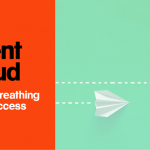In this second of three posts I want to explore some of the common blockers that come up when considering moving to the public cloud and show you how they may be overcome.
It’s common for clients to feel trapped and constrained by their existing datacentres, often believing the cost and practicalities of updating it would prove unworkable, regardless of whether the datacentre is held in-house or outsourced.
I imagine we all want to take charge, release our inner Andy Dufresne and escape. It would however be preferable to take less than the 19 years it took him.
There is no need to feel trapped!
Will I spend ages digging the tunnel?
Unlike our hero Andy, you are not just armed with a teaspoon to dig a five mile tunnel. Helpfully there are tools that can help you bridge the gap between the data centre and the public cloud and accelerate your migration to the public cloud.
Using Velostrata and your existing VMware management tools you can move business application workloads from on-premises into the public cloud quickly and easily, with a full safety net and easy rollback options. If you are not yet ready to run production services in the public cloud then Velostrata opens up some other exciting options. How about accelerating testing and development by moving applications to and from the cloud in minutes, with many options for handling data. If that’s not enough why not leverage the public cloud for on-demand capacity to meet demand spikes without overprovisioning data centre resources.
How can it be that quick?
The secret lies in decoupling Compute from Storage allowing you to test and run in the cloud without waiting for all your storage / data migration to be completed. Storage migrates in the background, allowing compute to be running in the cloud within minutes. What this means to you is that workloads can be moved from on-premises to the cloud up to 100x faster than more commonplace replication-based approaches.
Red says “I remember thinking it would take a man 600 years to tunnel through the wall. Andy did it in less than 20”. Maybe you can escape quicker than you think!
It’s Complex, right?
What if more people dig the tunnel
Is it safe?
Here are just some of the benefits that can be achieved through moving to the cloud:-
- Cost savings by reducing manual labour and eliminating redundant on-premises systems sooner.
- Properly tuned for performance and cost, avoid cloud vendor lock-in, seamlessly rollback to on-premises if needed.
- Free up countless IT hours for other initiatives by reducing complexity and manual labour requirements.
- Architect the cloud that works best for your enterprise through better automation and workloads that boot in the cloud within minutes.
- Free up countless IT hours for other initiatives by reducing complexity and manual labour requirements





